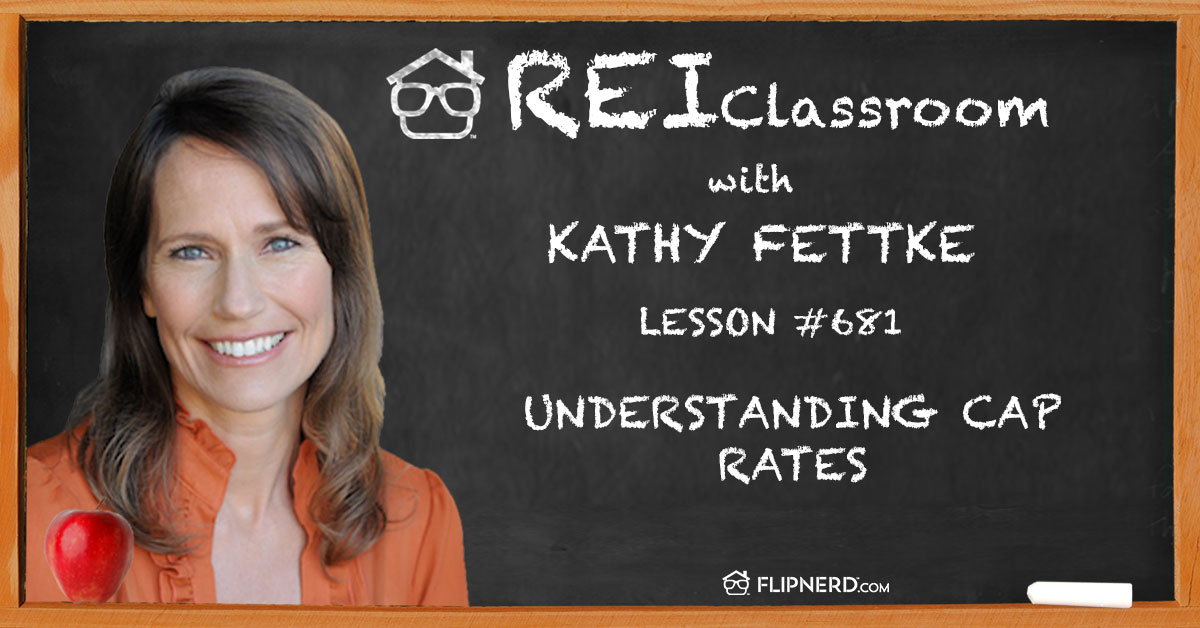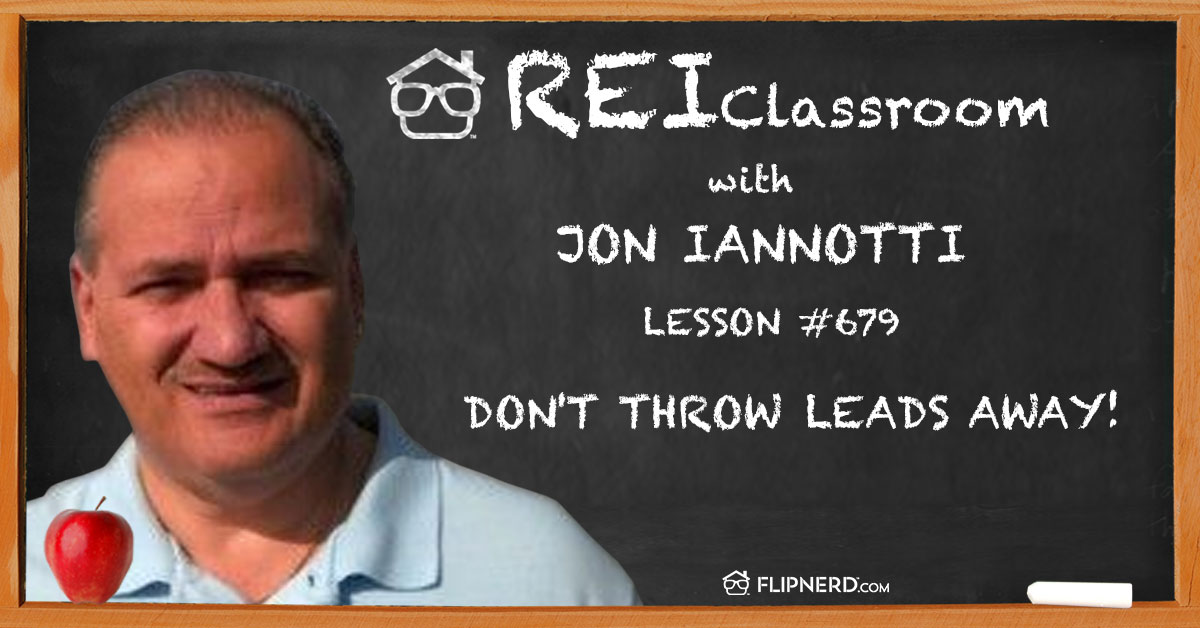Today’s REI Classroom Lesson
Michael Blank explains an option you have that allows you to end up with the majority of an apartment building, even when you’re the syndicator and not one of the investors.
REI Classroom Summary
Learn more about how preferred rates of returns works, including risks and benefits of the strategy.
Listen to this REI Classroom Lesson
Real Estate Investing Classroom Show Transcripts:
Mike: Welcome back to the Flipnerd.com, REI Classroom, where experts from across the real estate investing industry teach you quick lessons to take your business to the next level. And now, let’s meet today’s expert host.
Michael: Hi there, and welcome to the REI Classroom. My name is Michael Blank. If you’re interested in apartment building investing, you are in the right place. So in today’s episode I’m going to talk to you about how you can own the majority of a building even though you are using other people’s money to buy it.
Mike: This REI Classroom, real estate lesson is sponsored by theinvestormachine.com, FlipNerd’s private investor coaching program and your blueprint to investing success.
Michael: All right. What do you get when you mix a value-add apartment building deal, none of your own money, a preferred return for the investors, and a cash out refinance? Give up? All right, I’ll give you the answer. The answer is you owning the majority of the apartment building without using any of your money.
So, was that a little fast for you? That’s okay. So I’m going to break this thing down here and I’m going to show you how two different ways to structure a deal when you’re buying an apartment building and you’re using investors. Okay. So, here’s a setup. And there’s going to be some numbers here, so I’m going to stare at my notes just a little bit so I get my numbers straight here. But I don’t want you lose the main point, which is basically how you can end up owning the majority of the building even though you bought it with investors.
So, here’s the setup. You’re buying an apartment building and there’s a value-add opportunity. You’re maybe raising rents by $100, you have to put in some work. But at the end of the day, over the course of five years, through the increased income and the value you’re creating in the apartment building, you’re actually creating equity of, let’s say, $275,000. So, let’s say that’s the setup.
Now, there’s two ways you can structure this deal with your investors. Number one is a straight equity split, and number two is a kind of a preferred rate of return. And I’ll explain this to you. But the first straight equity split is very simple, right? So, you as a syndicator, let’s say, retain 30% of the equity and the investors get 70%, and we talked previously about you as a syndicator getting paid as a syndicator, why that you should get paid, and then different ways you can get paid. So, take a look at that other episode about how to pay yourself for syndicating deals.
So, anyways, so in this case straight equity split is you’re getting 30% of the syndicator, the investors are getting 70%. So in this particular scenario, and I’m just going to wave my hands a little bit because I have a fairly sophisticated model that I use for this that you can acquire as well on themichealblank.com. But I’m going to my wave my hands a little bit because it’s the main point, not the details, that are important.
The main point is this, so, after five years when you sell this, and in this particular example you’re buying a building and it’s a 50-unit building, you’re buying it for $530,000 and you raised $250,000. And over the course of time you actually, and when you cash out you’ve actually raised the valuation of that building by $275,000 by increasing the rents, so let’s say. So, in this particular case, you get 30% of all the cash flow distributions and 30% of the profit. So in five years, you will get about a $41,000 profit check when you sell, and over the course of five years your distribution is going to be around $50,000 or $10,000 per year for your 30% share.
So, that is fantastic, number one, for not having your own money in the deal. Now, there’s an even better option, and it’s basically giving the investors a preferred rate of return. Now, what the heck is that? So, a preferred rate of return is the investor, instead of getting a straight 70% split, what they do is they get a preferred rate of return and I’ll kind of . . . Let’s say you’re giving them an 8% preferred return. What that means is that they’re almost being paid an interest first. Out of all the cash loads available, 8% of what they put in has to be paid first before there’s any kind of profit split.
Now, normally, in return for this, they get lower equity. So, it’s unusual for an investor to get, say, a 10% preferred rate of return and 70% equity. It happens all the time but it’s . . . And I’ll show you exactly why it’s not really good for you to do that, but typically, the higher the preferred rate of return is to lower the equity. So, if someone is getting 10%, for example, preferred rate of return which is already in itself a pretty good return, then they might be very happy with any kind of small upside. So, a 10% return, 25% equity, right? So, 10% preferred return and then 25% of kind of upside. So, most investors are very happy with that.
So here’s what happens. Now, the reason that you might not be so happy with that is the following, because if you’re doing, let’s say, a 10% preferred return first and the project doesn’t quite go as you planned, and let’s say, there’s not enough to distribute to actually pay out the 10% return, what happens is it starts accruing. So if you can only pay out, let’s say, 5% this year, that means you owe the 10% next year plus the 5% for the previous year and what happens is, you never, as a syndicator, never actually get paid.
And that’s a problem over the long term because why would I bust my butt with a project that I’m not getting paid? And so, that’s the issue with preferred rate of return. You have to be careful about that. For the investors that’s fantastic. For you as a syndicator, not so much.
All right. But here’s the advantage of the preferred rate of return. So, let’s say, you raised $250,000 and you’re adding value, and let’s say in five years you’re paying out a preferred rate of return which is not good for you, so your cash flow is lower. But let’s say in five years you’ve raised the value of the building, you do a cash out refinance, and you return the equity back to the investors. Now, in this case, let’s say, we raised $250,000 and we’re paying a 10% preferred rate of return on that, $250,000. That means out of the cash flow, the first 10% are $25,000 has to be returned to the investors before we do any kind of equity split or profit split.
But once you do a cash out, and so let’s say you do 10% preferred . . . You give the investors 10% preferred return and 25% equity, let’s say. Most investors will be happy with that because they’re basically getting almost like a guaranteed payment plus 25% of the upside. So, they’re getting paid very, very well while their money is in the deal, but when you’re refinancing and by adding value, this is only works for value-add deals, but you’re adding a value, then you can return that $250,000 through the refinance to the investors and now all of a sudden that preferred rate of return goes away, because the preferred rate of return is 10% of all the equity that’s in the deal, 10% of $250,000 is $25,000 that you’re paying out to the investors.
But now the equity is gone, all their money is back, so the preferred rate of return is 10% of now zero. There’s no preferred rate of return. Now, the investor continues to have the 25% equity interest. That never changes. The equity never changes whether you do a refinance or not. So in this particular case, this is fantastic because you end up, after doing the refinance, you end up with the majority of the building.
Now, the investors are also happy by the way because they’ve already got their principle back. Their risk is off the table. So, it’s really kind of a win-win. Just remember, the downside is, this only works for value-add deal where you can do a cash out refinance, and remember the downside is while this is going on, your compensation is going to be lower than a straight equity split, but it would be a very, very clever tool for you to end up, over the course of three to five years depending on the cash out refinances, for you actually as a syndicator end up owning the majority of the building.
All right. That’s all I got today. Thanks very much for your time. If you want to find out more about raising money, I have a bunch of more resources on the website where you can find me which is themichealblank.com, that’s T-H-E-michealblank.com. I have a free e-book on raising money and a bunch of articles, videos and podcasts where you can learn more about raising money. So, I hope you found this technique useful. Thanks again for your time and I will catch you on the next REI Classroom. All right, take care.
Mike: Are you looking to change your life through real estate investing? If you are interested in either getting started or taking your business to the next level, please check out FlipNerd’s private program at theinvestormachine.com. This is the most robust real investor coaching, networking and mastermind on the planet and designed for your success.
If you’re ready to roll up your sleeves, ready to take personal responsibility for your own success, and ready to dive into a world-class instructional coaching program that provides you step-by-step instruction to help you achieve financial freedom, then you should apply today. Spaces are limited and candidates are only considered after an application and interview process. Our 12-month investor program is unparalleled. Think you might be a fit? Learn more today at theinvestormachine.com.
Please note the views and opinions expressed by the individuals in this program do not necessarily reflect those of flipnerd.com or any of its partners, advertisers or affiliates. Please consult professionals before making any investment or tax decisions, as real estate investing can be risky.
Are you a member yet of Flipnerd.com, the hottest real estate investing social community online? If not you, can join for free in less than 30 seconds and get access to hundreds of off-market deals, vendors in your market to help you in your business. And you can start networking with thousands of other investors just like you. Get your free account now at flipnerd.com.
Please check out the FlipNerd family of real estate investing shows where you can access hundreds of expert interviews, quick tips and lessons from leaders across the real estate investing industry. They’re available at flipnerd.com/shows or simply search for “FlipNerd” in the iTunes store.
Michael: Hi there, and welcome to the REI Classroom. My name is Michael Blank. If you’re interested in apartment building investing, you are in the right place. So in today’s episode I’m going to talk to you about how you can own the majority of a building even though you are using other people’s money to buy it.
Mike: This REI Classroom, real estate lesson is sponsored by theinvestormachine.com, FlipNerd’s private investor coaching program and your blueprint to investing success.
Michael: All right. What do you get when you mix a value-add apartment building deal, none of your own money, a preferred return for the investors, and a cash out refinance? Give up? All right, I’ll give you the answer. The answer is you owning the majority of the apartment building without using any of your money.
So, was that a little fast for you? That’s okay. So I’m going to break this thing down here and I’m going to show you how two different ways to structure a deal when you’re buying an apartment building and you’re using investors. Okay. So, here’s a setup. And there’s going to be some numbers here, so I’m going to stare at my notes just a little bit so I get my numbers straight here. But I don’t want you lose the main point, which is basically how you can end up owning the majority of the building even though you bought it with investors.
So, here’s the setup. You’re buying an apartment building and there’s a value-add opportunity. You’re maybe raising rents by $100, you have to put in some work. But at the end of the day, over the course of five years, through the increased income and the value you’re creating in the apartment building, you’re actually creating equity of, let’s say, $275,000. So, let’s say that’s the setup.
Now, there’s two ways you can structure this deal with your investors. Number one is a straight equity split, and number two is a kind of a preferred rate of return. And I’ll explain this to you. But the first straight equity split is very simple, right? So, you as a syndicator, let’s say, retain 30% of the equity and the investors get 70%, and we talked previously about you as a syndicator getting paid as a syndicator, why that you should get paid, and then different ways you can get paid. So, take a look at that other episode about how to pay yourself for syndicating deals.
So, anyways, so in this case straight equity split is you’re getting 30% of the syndicator, the investors are getting 70%. So in this particular scenario, and I’m just going to wave my hands a little bit because I have a fairly sophisticated model that I use for this that you can acquire as well on themichealblank.com. But I’m going to my wave my hands a little bit because it’s the main point, not the details, that are important.
The main point is this, so, after five years when you sell this, and in this particular example you’re buying a building and it’s a 50-unit building, you’re buying it for $530,000 and you raised $250,000. And over the course of time you actually, and when you cash out you’ve actually raised the valuation of that building by $275,000 by increasing the rents, so let’s say. So, in this particular case, you get 30% of all the cash flow distributions and 30% of the profit. So in five years, you will get about a $41,000 profit check when you sell, and over the course of five years your distribution is going to be around $50,000 or $10,000 per year for your 30% share.
So, that is fantastic, number one, for not having your own money in the deal. Now, there’s an even better option, and it’s basically giving the investors a preferred rate of return. Now, what the heck is that? So, a preferred rate of return is the investor, instead of getting a straight 70% split, what they do is they get a preferred rate of return and I’ll kind of . . . Let’s say you’re giving them an 8% preferred return. What that means is that they’re almost being paid an interest first. Out of all the cash loads available, 8% of what they put in has to be paid first before there’s any kind of profit split.
Now, normally, in return for this, they get lower equity. So, it’s unusual for an investor to get, say, a 10% preferred rate of return and 70% equity. It happens all the time but it’s . . . And I’ll show you exactly why it’s not really good for you to do that, but typically, the higher the preferred rate of return is to lower the equity. So, if someone is getting 10%, for example, preferred rate of return which is already in itself a pretty good return, then they might be very happy with any kind of small upside. So, a 10% return, 25% equity, right? So, 10% preferred return and then 25% of kind of upside. So, most investors are very happy with that.
So here’s what happens. Now, the reason that you might not be so happy with that is the following, because if you’re doing, let’s say, a 10% preferred return first and the project doesn’t quite go as you planned, and let’s say, there’s not enough to distribute to actually pay out the 10% return, what happens is it starts accruing. So if you can only pay out, let’s say, 5% this year, that means you owe the 10% next year plus the 5% for the previous year and what happens is, you never, as a syndicator, never actually get paid.
And that’s a problem over the long term because why would I bust my butt with a project that I’m not getting paid? And so, that’s the issue with preferred rate of return. You have to be careful about that. For the investors that’s fantastic. For you as a syndicator, not so much.
All right. But here’s the advantage of the preferred rate of return. So, let’s say, you raised $250,000 and you’re adding value, and let’s say in five years you’re paying out a preferred rate of return which is not good for you, so your cash flow is lower. But let’s say in five years you’ve raised the value of the building, you do a cash out refinance, and you return the equity back to the investors. Now, in this case, let’s say, we raised $250,000 and we’re paying a 10% preferred rate of return on that, $250,000. That means out of the cash flow, the first 10% are $25,000 has to be returned to the investors before we do any kind of equity split or profit split.
But once you do a cash out, and so let’s say you do 10% preferred . . . You give the investors 10% preferred return and 25% equity, let’s say. Most investors will be happy with that because they’re basically getting almost like a guaranteed payment plus 25% of the upside. So, they’re getting paid very, very well while their money is in the deal, but when you’re refinancing and by adding value, this is only works for value-add deals, but you’re adding a value, then you can return that $250,000 through the refinance to the investors and now all of a sudden that preferred rate of return goes away, because the preferred rate of return is 10% of all the equity that’s in the deal, 10% of $250,000 is $25,000 that you’re paying out to the investors.
But now the equity is gone, all their money is back, so the preferred rate of return is 10% of now zero. There’s no preferred rate of return. Now, the investor continues to have the 25% equity interest. That never changes. The equity never changes whether you do a refinance or not. So in this particular case, this is fantastic because you end up, after doing the refinance, you end up with the majority of the building.
Now, the investors are also happy by the way because they’ve already got their principle back. Their risk is off the table. So, it’s really kind of a win-win. Just remember, the downside is, this only works for value-add deal where you can do a cash out refinance, and remember the downside is while this is going on, your compensation is going to be lower than a straight equity split, but it would be a very, very clever tool for you to end up, over the course of three to five years depending on the cash out refinances, for you actually as a syndicator end up owning the majority of the building.
All right. That’s all I got today. Thanks very much for your time. If you want to find out more about raising money, I have a bunch of more resources on the website where you can find me which is themichealblank.com, that’s T-H-E-michealblank.com. I have a free e-book on raising money and a bunch of articles, videos and podcasts where you can learn more about raising money. So, I hope you found this technique useful. Thanks again for your time and I will catch you on the next REI Classroom. All right, take care.
Mike: Are you looking to change your life through real estate investing? If you are interested in either getting started or taking your business to the next level, please check out FlipNerd’s private program at theinvestormachine.com. This is the most robust real investor coaching, networking and mastermind on the planet and designed for your success.
If you’re ready to roll up your sleeves, ready to take personal responsibility for your own success, and ready to dive into a world-class instructional coaching program that provides you step-by-step instruction to help you achieve financial freedom, then you should apply today. Spaces are limited and candidates are only considered after an application and interview process. Our 12-month investor program is unparalleled. Think you might be a fit? Learn more today at theinvestormachine.com.
Please note the views and opinions expressed by the individuals in this program do not necessarily reflect those of flipnerd.com or any of its partners, advertisers or affiliates. Please consult professionals before making any investment or tax decisions, as real estate investing can be risky.
Are you a member yet of Flipnerd.com, the hottest real estate investing social community online? If not you, can join for free in less than 30 seconds and get access to hundreds of off-market deals, vendors in your market to help you in your business. And you can start networking with thousands of other investors just like you. Get your free account now at flipnerd.com.
Please check out the FlipNerd family of real estate investing shows where you can access hundreds of expert interviews, quick tips and lessons from leaders across the real estate investing industry. They’re available at flipnerd.com/shows or simply search for “FlipNerd” in the iTunes store.










